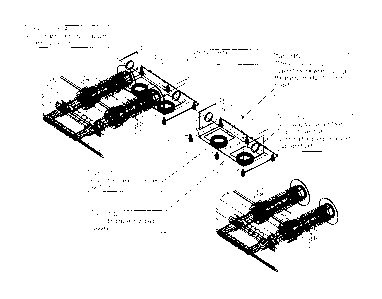Some of the information on this Web page has been provided by external sources. The Government of Canada is not responsible for the accuracy, reliability or currency of the information supplied by external sources. Users wishing to rely upon this information should consult directly with the source of the information. Content provided by external sources is not subject to official languages, privacy and accessibility requirements.
Any discrepancies in the text and image of the Claims and Abstract are due to differing posting times. Text of the Claims and Abstract are posted:
| (12) Patent Application: | (11) CA 2852784 |
|---|---|
| (54) English Title: | VACUUM FOOD SCRAPS AND TRASH BIN |
| (54) French Title: | ASPIRATEUR A DECHETS ALIMENTAIRES ET POUBELLE |
| Status: | Deemed Abandoned and Beyond the Period of Reinstatement - Pending Response to Notice of Disregarded Communication |
| (51) International Patent Classification (IPC): |
|
|---|---|
| (72) Inventors : |
|
| (73) Owners : |
|
| (71) Applicants : |
|
| (74) Agent: | |
| (74) Associate agent: | |
| (45) Issued: | |
| (22) Filed Date: | 2014-05-30 |
| (41) Open to Public Inspection: | 2015-11-30 |
| Availability of licence: | N/A |
| Dedicated to the Public: | N/A |
| (25) Language of filing: | English |
| Patent Cooperation Treaty (PCT): | No |
|---|
| (30) Application Priority Data: | None |
|---|
A vacuum food scraps or trash bin has vacuum pump assembly installed to
achieve vacuum
pressure in the bin. The vacuum pump assembly may be manually driven piston
type or an
electrically driven vacuum pump type powered by solar panel with battery. A
push button on
the lid or a foot pedal at the bin bottom is for releasing the bin vacuum
pressure prior to
opening the lid. A seal rubber gasket between the lid and bin body sustains
the achieved
vacuum pressure while the lid is closed. Suction heat with filter on the lid
prevents the debris
from plugging the vacuum pump while the air is being sucked out. This
invention may be used
in combination with food scraps or trash bins of different sizes and shapes.
This invention may
benefit the air quality in communities by decreasing the odor emission from
food scraps or
trash bins while supporting the food scraps recycling program for sustainable
community and
environmental protection.
Note: Claims are shown in the official language in which they were submitted.
Note: Descriptions are shown in the official language in which they were submitted.

2024-08-01:As part of the Next Generation Patents (NGP) transition, the Canadian Patents Database (CPD) now contains a more detailed Event History, which replicates the Event Log of our new back-office solution.
Please note that "Inactive:" events refers to events no longer in use in our new back-office solution.
For a clearer understanding of the status of the application/patent presented on this page, the site Disclaimer , as well as the definitions for Patent , Event History , Maintenance Fee and Payment History should be consulted.
| Description | Date |
|---|---|
| Application Not Reinstated by Deadline | 2017-05-30 |
| Time Limit for Reversal Expired | 2017-05-30 |
| Deemed Abandoned - Failure to Respond to Maintenance Fee Notice | 2016-05-30 |
| Inactive: Cover page published | 2016-01-20 |
| Application Published (Open to Public Inspection) | 2015-11-30 |
| Inactive: IPC assigned | 2014-06-30 |
| Inactive: IPC assigned | 2014-06-30 |
| Inactive: IPC assigned | 2014-06-30 |
| Inactive: IPC assigned | 2014-06-27 |
| Inactive: First IPC assigned | 2014-06-27 |
| Filing Requirements Determined Compliant | 2014-06-16 |
| Inactive: Filing certificate - No RFE (bilingual) | 2014-06-16 |
| Application Received - Regular National | 2014-06-03 |
| Inactive: Pre-classification | 2014-05-30 |
| Small Entity Declaration Determined Compliant | 2014-05-30 |
| Abandonment Date | Reason | Reinstatement Date |
|---|---|---|
| 2016-05-30 |
| Fee Type | Anniversary Year | Due Date | Paid Date |
|---|---|---|---|
| Application fee - small | 2014-05-30 |
Note: Records showing the ownership history in alphabetical order.
| Current Owners on Record |
|---|
| WEIHUA SUN |
| XIAOWEI YU |
| Past Owners on Record |
|---|
| None |